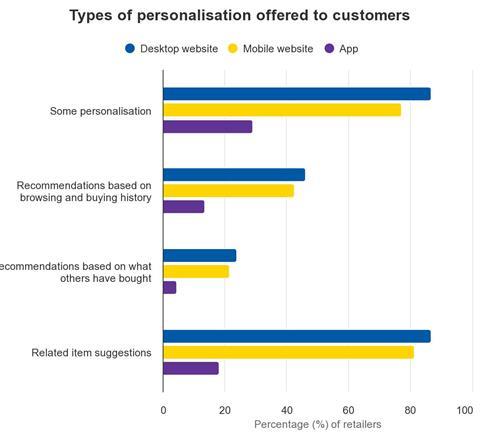eBay took third place in Retail Week Indicator’s ecommerce category this year as its personalisation efforts paid off. We look at how the online marketplace makes the customer experience tailored to each user

eBay took third place in Retail Week Indicator’s ecommerce category this year as its personalisation efforts paid off.
Personalisation has been eBay’s watchword in recent years, in a bid to ensure its vast range of products are presented to its shoppers in the most relevant way possible.
Chief curation and merchandising officer Bradford Shellhammer says: “No one in ecommerce has really cracked [personalisation] yet and it’s a unique opportunity for eBay because of the diversity of our catalogue.”
Shellhammer explains that eBay’s aim is to recommend items to shoppers that “are not just related to what you’ve looked at most recently but are safely related in an ecosystem of stuff around the things we know you like”.
“It’s not enough to measure clicks, we need to start a dialogue [with our shoppers],” he adds.
This was the driving purpose behind eBay’s launch of the Interests function last year.
The tool allows shoppers to select categories on the online marketplace that interest them, ranging from their favourite activities to taste in music and sense of style, and then have relevant items suggested to them to buy as a result.
Since its initial launch in the US in May last year, the etailer has rolled out the tool across its UK, German, Canadian and Australian divisions, with 2.6 million users using it in the eight months since its debut.
It’s clearly a hit with the customers using the feature, who on average save 18 interests while browsing on eBay’s native website and 10 when shopping on mobile.
Give more to get more
As shoppers become increasingly cautious on protecting their data, eBay’s tool is a savvy move because it gives users control over the level of personalisation they are offered while shopping, which creates a genuinely helpful and interactive experience for customers rather than one that goes right past cool and into creepy.
Nevertheless, Shellhammer believes today’s shoppers, particularly millennials, “are willing to give more to get more” when it comes to their data – the trick is to ensure that once they have shared personal information it is used effectively to genuinely enhance their shopping experience.

To this end, Shellhammer says eBay uses “a combination of AI and structured data” to “deliver highly personalised, relevant and inspiring shopping experiences” such as personalised homepages for shoppers who use Interests.
The online marketplace has also added personalisation to listings pages. Its new tool allows shoppers to find similar items to the product page they are viewing by clicking on three dots on the top right-hand corner of the listing.
eBay has also invested in visual search technology to drive the discovery of products on its platform. Its Find It On eBay tool allows shoppers to upload pictures to the etailer’s platform and be presented with similar items.
As many retailers grapple with the best way to personalise the online shopping experience without scaring the customer, eBay has struck the right balance by combining AI-fuelled personalisation with user participation.
How many retailers are offering personalisation?
eBay isn’t alone in prioritising personalisation. Indicator highlighted that personalisation initiatives are on the rise across retail.























